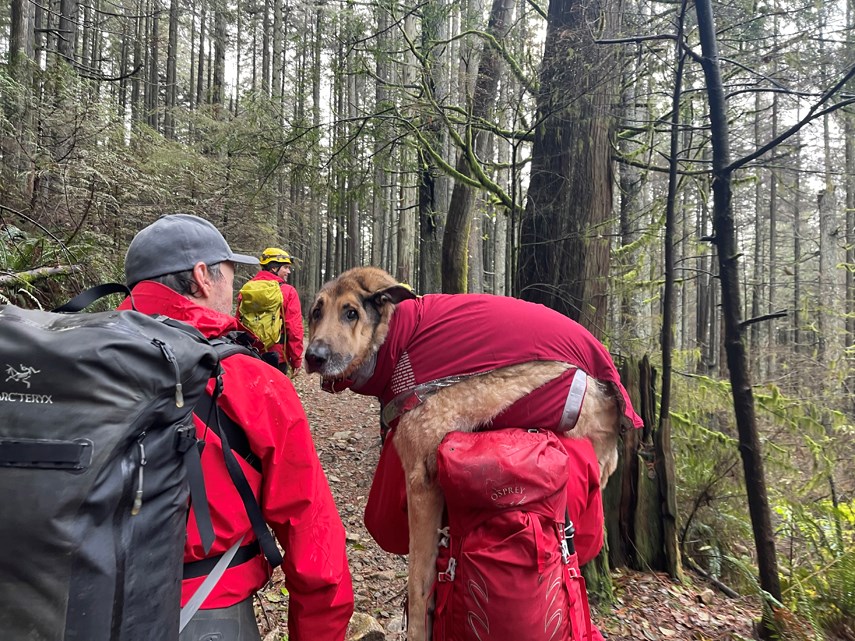North Shore Rescue volunteers packed a pooched pup and helped hypothermic hikers out of the Mount Seymour trails Wednesday afternoon.
NSR co-ordinated with District of North Vancouver Fire and Rescue Services and North Vancouver RCMP after they received a yelp for help from the trails, about 1.5 kilometres west of Mount Seymour Road.
Search manager Dave Barnett sent two teams in. The first to arrive helped rewarm the four freezing hikers with heat vests and extra clothing while the second figured out what to do about Archie, the immobilized dog.
“The dog’s rear legs just essentially gave out,” Barnett said. “That dog wasn't able to move and there's no way that people could take him out.”
The team evacuates dogs out of the trails a couple times per year, Barnett said. They are equipped with some harnesses suitable for helicopter extractions or backpacks that will fit a smaller dog but, at roughly 75 pounds, it took four NSR members taking turns to carry Archie back to civilization.
“As it turned out, the best tool for carrying that dog was the old-fashioned human carry,” Barnett said. “That wouldn't be necessarily our first choice but it worked well.”
It was fortunate Archie was quite passive and didn’t mind the help, Barnett said. Back at the parking lot, Archie was able to stand and walk on its own and did not appear to be injured, Barnett added.
“I think it was just really just exhausted. It was an older dog,” Barnett said.
Apart from the K9, it was a fairly straight forward rescue for the team. But Barnett said there a few safety lessons that can be learned, especially about the changing conditions in the North Shore Mountains, this time of year.
“Winter is here. We'd like everyone to make sure they're travelling with warm clothing and footwear suitable for snow and ice because the snow is coming down at lower levels,” he said.
And, he added, even experienced trail users can find themselves biting off more than they can chew.
“Pick your distance and your routes carefully,” he said.



